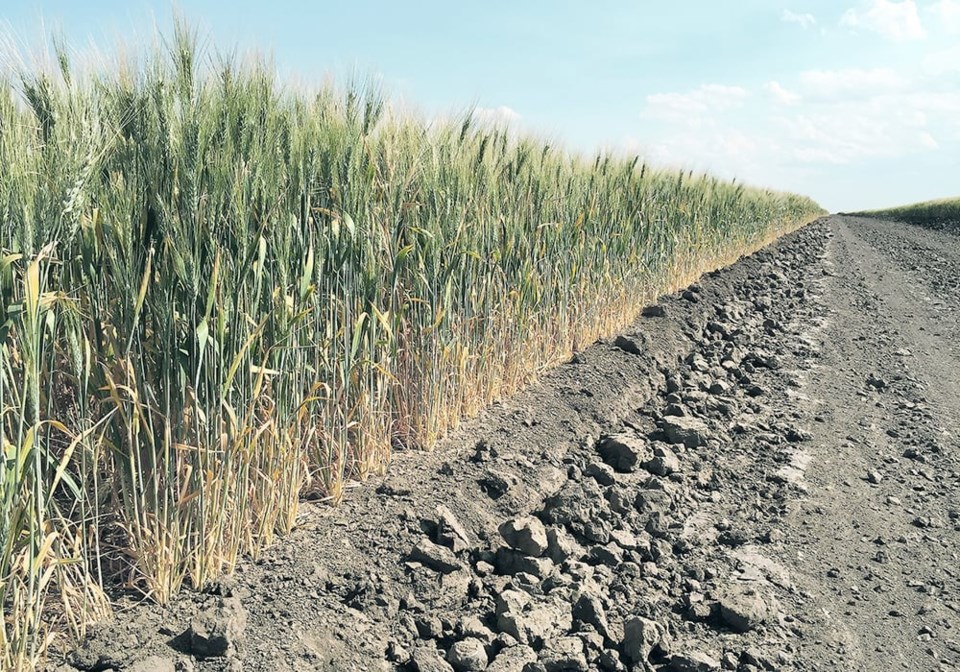WESTERN PRODUCER — The durum market has taken a “wild” turn as Turkey has suddenly emerged as a major force in the export market.
“This is something that caught everybody off guard, especially Canadian exporters,” said Jonathan Meyer, merchandiser with Purely Canada Foods.
“It has really saved the day for pasta producers because if it wasn’t for Turkey, you’d see prices that were mirroring 2021 again and I think that’s what every farmer had hoped for.”
Prices soared to $23 per bushel following Canada’s big drought year.
Today they are “hanging on” at around $14 and that’s only because Canadian farmers are reluctant sellers, he said.
Annachiara Saguatti, senior market analyst with Italian agrifood intelligence company Areté, said Turkey is poised to usurp much of Canada’s market share in the European Union in 2023-24.
Turkish farmers produced 4.1 million tonnes of durum in 2023, which is the same amount as their Canadian counterparts, according to the International Grains Council.
That is because of the combination of a poor crop in Canada and an exceptional harvest in Turkey, which usually produces about 3.5 million tonnes of durum, she said.
Turkey rarely exports durum because of intense domestic demand.
“The government usually ensures the domestic supply but is currently allowing exports due to the large domestic durum harvest and voluminous carry-in stocks following high imports from Russia and Kazakhstan in 2022-23,” said Saguatti.
The devalued Turkish lira makes selling durum to the EU even more attractive. Russia has been exporting large volumes for the same reason.
Rossella Polito, an Italian durum farmer who follows the market closely, said Turkey had a poor crop in 2021, the same year that production was slashed in North America due to drought.
The durum shortage forced the government to introduce new regulations, allowing pasta to be made entirely with soft wheat for export to African countries, Iraq, Syria, Lebanon, Jordan and South American countries.
Previously, pasta for export to those markets had to be made from durum wheat and a maximum of 30 percent soft wheat.
“This obviously lowered the consumption of Turkish origin durum wheat destined for export as finished goods,” she said in an email.
The Turkish government estimates that domestic consumption will be about 2.5 million tonnes this year, leaving 1.5 million tonnes available for export.
Polito, who posts as @spiga_dorata on the X social media platform, said the EU has strong import needs because of quality damage to its domestic crop.
Saguatti expects European imports of durum to slow in the coming months as imports from Turkey and Russia are reduced and Canadian supplies are insufficient to pick up the slack.
She thinks Turkey will ship 800,000 to 900,000 tonnes of durum to the EU in 2023-24, although there is talk of the Turkish government imposing an export ban at some point.
Areté believes Russia will ship around 200,000 tonnes to the EU, while Canadian exports are projected at 500,000 tonnes because of its short crop.
Polito agreed that Europe will import large volumes of durum due to a poor domestic crop of 7.11 million tonnes, the smallest in at least a dozen years.
Italy, in particular, needs to import good quality durum because harvest rains resulted in crops with very low test weights in that country.
The European Commission is forecasting 2.6 million tonnes of imports from non-EU countries this year.
Polito said Russia and Kazakhstan could have big issues with quantity and quality this year because they had heavy rains before and during harvest. Some of their crops will be destined for the feed market.
She believes EU demand for Canadian durum will pick up at the end of 2023 and in the first part of 2024 once Turkish exports start to slow.
Saguatti thinks Turkey’s rapid ascension to the top exporter spot in the EU market will be short-lived because it typically plants half the acreage of Canada.
“Canadian export potential will still be much higher than the Turkish one for years to come, provided that Canada is able to reach better yields in the future,” she said.
Polito said the Turkish government expected farmers to plant more durum than normal in October if the price holds up.
In the future, there is potential for increased Turkish durum production because of a project aimed at increasing irrigation canals in the region where the crop is grown, she said.
Meyer expects Turkey to export 1.5 million tonnes of durum around the world in 2023-24. He doesn’t anticipate a repeat of that “crazy” performance in future years.
But the country may become a consistent exporter of the crop because of the increased use of soft wheat in its short-cut pasta products.
Meyer is forecasting 3.0 to 3.5 million tonnes of Canadian exports in 2023-24, down from 5.13 million tonnes last year.
That would be on the lower end of the typical range of exports, but that is to be expected given production fell by about two million tonnes from the previous year.
He said price direction will depend on how long Canadian farmers hold onto their crops.
Contact [email protected]
SASKTODAY.ca is Saskatchewan's home page. Bookmark us at this link.

